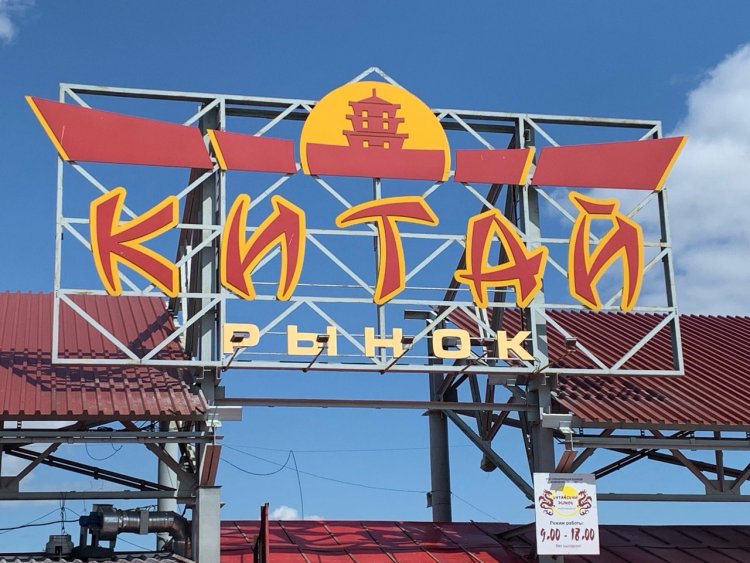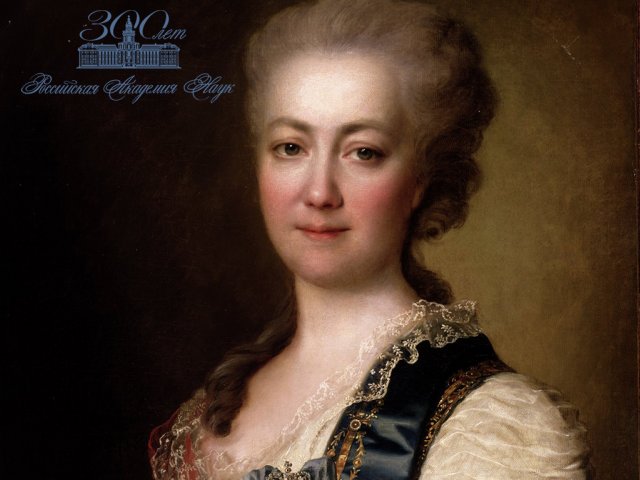Research by Urals experts is aimed at studying the situation with international labor migration in the South Urals, which may play an important role in its socio-economic development
In many countries foreign migrants are often attracted as cheap labor in various sectors of the economy. However, the process of external intercountry labor migration is not always clearly regulated, therefore sometimes the host society develops mistrust and negative stereotypes toward migrants. In this connection, there is a need for scientific analysis of historical experience in solving migration problems, interethnic experience of coexistence, and migration policy strategies; this will help prevent and resolve interethnic tensions and conflicts.
SUSU researchers (Chelyabinsk) study the formation and development of Asian migrant communities in the South Urals and the host society's perception of this problem. According to the scientists, migration can be a resource for the development of the country and the region. In the current project under the grant of the Russian Foundation for Basic Research “The Asian vector of migrations to Chelyabinsk Region: historical retrospective, forecasts and risks,” the specialists intend to develop new scientific approaches and practical recommendations in the sphere of regional national and migration policy on the basis of complex characteristics of migrations from Asia.
Andrey Aleksandrovich Avdashkin, PhD in History
Andrey Aleksandrovich Avdashkin, PhD (History), Senior Researcher at the Laboratory for Migration Studies of the FSAEIHE South Ural State University (national research university) (Chelyabinsk), spoke about the migration situation in the Urals region, what ethnic phobias exist in modern society, and what is the role of labor migration in creating conditions for economic growth in the country.
According to Andrey Avdashkin, “The urgent issues of labor migration in the Urals region are just like those throughout Russia: a shortage of labor force, natural and migratory population decline. “Underpopulation” is already becoming sharply felt in the Urals, Siberia, and the Far East. About a quarter of the population lives in this vast part of the country. Let's take a look at how many cities with a population of one million people we have. There are only four of them in the Urals: Chelyabinsk, Yekaterinburg, Ufa, and Perm. Although there are some peculiarities. For a long time, the natural decrease was compensated by international migration. Taking into account the fact that the Urals are part of the Russian-Kazakh borderland, a significant part of this inflow came from Northern Kazakhstan. For example, people came to Chelyabinsk mainly from Kostanay and Rudny (Kostanay Region, Kazakhstan). The next significant group in the structure of labor and international migrations were natives of Tajikistan (in the Chelyabinsk and Sverdlovsk Regions).”
Why is the Urals region so attractive to migrants?
“The proximity of the frontier and the settlement of the predominantly Russian-speaking population in northern Kazakhstan largely determined migration flows to the Chelyabinsk Region. It is a border region. This was also influenced by the long experience of cooperation between institutions and enterprises in Soviet times, as well as by the proximity of Chelyabinsk. For example, Chelyabinsk and Kostanay are only 321 kilometers apart; the distance between Yekaterinburg and Chelyabinsk is 215 kilometers, the distance to Ufa is 420 kilometers, and the distance to Orenburg is over 700 kilometers. Due to transport accessibility and the large number of acquaintances who have already been adapted, many people choose Chelyabinsk. This option is quite acceptable for newcomers from Kazakhstan to “start” with.
As far as I can tell from the structure of migration, Tajiks predominate in the Chelyabinsk and Sverdlovsk Regions. By the way, Yekaterinburg, according to certain parameters, accumulates a significant, for the Urals, number of migrants from the People's Republic of China. There is even a small neighborhood in one of the city districts (“Sortirovka”), which is sometimes called “Chinatown.” But this is just an image for a more colorful media description. Basically, there are relatively few buildings and sites with a noticeable presence of Chinese people, nothing more. In general, the paths of integration of migrants can be very different: integrated today, changed attitudes tomorrow, changed biographical context, etc.,” Andrey Avdashkin specified.
What tendentious stereotypes about migration from Central Asia exist to this day and what are their backgrounds?
“These stereotypes, images, and language of description have undergone some transformation over a fairly short period of Russian society and the state's acquaintance with large-scale cross-border migrations. Briefly: the focus of negative attitudes has noticeably shifted from the “Caucasians” to the natives of Asian countries (Vietnamese, Chinese, and Central Asians) over the last five years. Why did this happen? This is a debatable question. The migration from Asia rapidly entered the public and political discourse in the early 1990s. But the main stories there revolved around the idea of Chinese expansion, Chinese markets, and “Chinatowns. Even Chelyabinsk media wrote about the imminent appearance of a Chinatown, numerous Chinese migrants, etc. By the early 2000s, it became clear that there were no Chinatowns. The number of Chinese citizens in Russia did not exceed 250,000-500,000 at the same time, but with the economic recovery and intensive development of construction, Central Asian labor migrants were flooding into the country. Tajikistan and Uzbekistan became the main suppliers of manpower for entire sectors of the Russian economy in the conditions of growth. The Russian society, not without the influence of the media, of course, has developed an idea of the typical characteristics of “guests from Central Asia.” Their positive characteristics include their unpretentiousness and hard-working nature. The negative spectrum includes clannishness, reliance on informal practices, illegal residence, violation of laws, disrespect for local norms and traditions, etc. Perhaps this is a most brief historical context of stereotype formation,” the researcher answered.
What ethnophobias exist in modern Russian society?
“There are many of them. I will give you a brief list. Migration is associated with the growth of crime – absolutely not, the real share of crimes committed by foreign nationals will not exceed 5%; migration leads to the replacement of local residents in the labor market – no, it does not, only those niches, where the locals do not really want to work, are filled; migrants settle in our country – no, even now Russia has a lot of competitors in the global labor market, gradually Central Asian residents explore other labor markets: Kazakhstan, European countries, the USA and others; migrant neighborhoods or enclaves are formed – no, due to the specifics of Russian urban space, migrants are distributed in approximately equal proportions throughout the urban development; there are only some small locations where there are slightly more migrants than on average in the city. Sociologists, namely Evgeny Varshaver from the RANEPA, call them “places of resident concentration of migrants.” By the way, his research team recently published a monograph on this topic (“Migrants in Russian Cities: Settlement, Concentration, Integration”). I recommend reading it. However, Russian cities, including Chelyabinsk, do not have those migrant districts or ethnic neighborhoods that cause public concern, which are colorfully described in the media, etc. Here I have highlighted only the most common “scary stories.” Xenophobia is largely generated by a minimal amount of direct contact between the hosting party and the migrants, and a lack of real knowledge about them. This vacuum is filled by myths and prejudices,” Andrey Avdashkin said.
How can we overcome stereotypes and suspicious attitudes toward migrants in the Urals region?
“It is simple. We should explain the positive consequences of migration, change the angle of migration coverage in the media (because they only write about negative things), and create conditions for daily interaction between different groups of migrant and non-migrant populations,” the scientist believes.
In the Urals, at one point the migrant-phobic discourse in society evolved around route taxi vans and “Chinese greenhouses.”
According to Andrey Avdashkin, “the route taxi vans (recently cabs) and greenhouses were not the only objects associated with phobias. The greenhouses are probably worth a closer look. The collapse of agriculture and land abandonment at some point coincided with the reorientation of Chinese migration from markets to the construction and agricultural sectors. “Chinese” greenhouses appeared in many areas of our country, filling the market with cheap vegetables. The lack of proper regulation of their activities led to the fact that often the quality of products left much to be desired. The uncontrolled use of fertilizers, damage and pollution of soils and bodies of water, etc., caused a lot of complaints and concerns. At this time, the idea of Chinatowns in the cities became untenable and they “found” an alternative in the countryside. In general, Chinatown has become a convenient metaphor in the rhetoric of our media, officials, and some scientists to explain all cases of the Chinese presence. It does not matter what kind of Chinese people we are talking about: students, migrant workers, or tourists.”
The phenomenon of the “ethnic/migrant market” in Russia, which became widespread in the early 1990s, is remarkable. This concept is not just about the numerical predominance of certain migrants in these locations: social relations within migrant groups, as well as with the hosting community, were built here.
What aspects of the “East” has the Chinese market revealed through the example of the Chelyabinsk case?
“The example of “Kitayka” in Chelyabinsk is not unique. There were similar markets in Irkutsk, Yekaterinburg, Moscow, Novosibirsk, and other cities. The logic of their development is approximately as follows. An open-air clothing market is formed on the territory of a collective farm market or a closed industrial enterprise. The Chinese were not the main group of traders. It was not the history of its development or the traders ethnicity that made the market “Chinese.” It was the hosting party attitude, the public opinion. When entering “Kitayka” in Chelyabinsk or “Shanghai” in Irkutsk, the visitor encountered not only Chinese, but also natives of Central Asia, Caucasians, gypsies, and local residents, for whom the market became the only way to survive in those conditions. Such markets provided the first experience of day-to-day communication with migrants, the city developments around them quickly acquired the image of a migrant neighborhood, etc. “Chinese” markets in different parts of the country often look very similar. Combination of red and yellow colors in decoration, stylization of Cyrillic letters as hieroglyphs, images of pagodas and dragons and etc. At the same time, the Chinese themselves do not form a majority among the traders; under these external “signboards” talking about Chineseness, they sell goods from Kyrgyzstan, lepeshkas from tandoor, etc. For example, the “Chinese” market in Chelyabinsk serves as one of the main sites of business activity for Central Asians. A kind of collective image of the East emerges in the markets. Although the markets are rapidly disappearing. Today, there is still the “Eastern City” market in the center of Chelyabinsk, which used to be a part of the Chinese market cluster. Recently it has been discussed to transform this area into a gastropark, not for the purpose of removing the “ethnic market,” but to gentrify this space,” the scientist pointed out.
Chinese market in Chelyabinsk.
At present, Ural scientists are working on the project under the RFBR grant “The Asian vector of migrations to Chelyabinsk Region: historical retrospective, forecasts and risks,” which is headed by Elena Salganova, Senior Researcher at the Laboratory for Migration Studies and head of the SUSU Department of Sociology. The researchers gave a complex characteristic of ethnic groups, who arrived from Asian countries (history of formation, specifics of dynamics in the Soviet and post-Soviet periods); they determined the causes and factors of the migration inflow; demonstrated the impact of these communities on the socio-economic situation and revealed current state, problems, causes, and sources of xenophobic sentiments in the hosting country. The Ural specialists traced a complex of problems both in historical dynamics and at the present stage. As Andrey Avdashkin emphasized, “We tried to observe not just the attitudes of the local population toward migrants (we conducted a sociological survey of 2,500 respondents). Much attention was paid to participant observation, in-depth interviews, local media research, and archival documents from the post-Soviet years. On the basis of these sources, we were able to get a comprehensive picture of migration in the region and, most importantly, to hear the “voice” of migrants themselves, to understand their view of the situation.”
What are the most relevant forms of internal and external migration for the Urals region (Chelyabinsk Region) at the present time?
“External migration is the movement from Central Asia. Internal migration is the outflow of the population to other regions, especially among young people. This is an alarming trend. It is ambitious and qualified young professionals that serve as the growth driver of modern megacities. The difficult environmental situation in most regions of the Urals and Siberia leads to the fact that these territories are losing population. Plus, the general decline in living standards contributes to the fact that people are looking for prospects in other parts of the country or go abroad. If we talk about international migration to the region, natives of Kazakhstan (mostly Russian-speaking) and Tajiks prevail. In recent years a clear hierarchy of attitudes toward migrants has developed in Russia. “According to the FOM data, people from Belarus, Kazakhstan, and Ukraine are mostly “acceptable” to the hosting party. Negative attitudes: Central Asia, China, to a lesser extent Transcaucasia. In general, the level of migrantophobia in the Russian society has increased since 2013. Suffice it to say that in the last year or two Chelyabinsk, Perm, and Novosibirsk have been characterized as the cities that dislike migrants the most. The state of interethnic relations in the regions of the Asian part of Russia causes alarm among experts. We'll see how the situation develops further,” Andrey Avdashkin said.
What is the role of international labor migration in the socio-economic development of the Urals region?
“It is huge. As I said, it compensates for the loss of population, provides an inflow of labor in the construction and agricultural sectors. At the same time, the number of foreign labor force does not exceed 3-5% of the economically employed population. Here is a simple data. During the first post-Soviet decade international migration made it possible to compensate for more than half (!) of the natural population decline in Chelyabinsk Region,” the scientist said.
In your opinion, in what way is it possible to change the perception angle of international labor migration in the hosting society?
“First, joint education of migrant and non-migrant children in schools, active work with these children and with conservative families. Second, activities of national-cultural associations and non-profit organizations (for example, a good practice of intercultural soccer: I took part in such matches myself when I was still a schoolboy and really appreciated the effect), or implementation of projects aimed at including migrants in the information agenda not only as a “problem” or “threat,” but as ordinary people with their biography, individuality, etc. Alternatively, implement an educational project, something like “Faces of the City” – showing migrants, their families, stories, etc. In general, we should create conditions for stable everyday contacts and common activities. Then it will turn out that migrants, say, from Tajikistan, and locals have much more in common. How can we change the angle of perception? We can instill the idea that migration is a resource for the development of territories; the more successful a region or country is, the more migrants it attracts. We need to debunk negative stereotypes about migration. The coronavirus pandemic led to an increase in mortality and a decrease in international migration to Russia. We will have to make up for these losses somehow, and alas, the natural population growth will not be able to do so. Attracting migrants is a strategic matter for our country,” Andrey Avdashkin expressed his opinion.
So, it is important to understand that labor migration is not just a labor force that has a noticeable impact on the demographic situation, it also compensates for natural decrease, fills the labor market, contributes to the inflow of ambitious people into society, creates conditions for intercultural communication, and it should also be taken into account by the hosting society.
*All images are provided by Andrey Avdashkin























